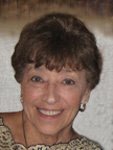I began with three statements.
- My book is about reflections on the writing life from a 40-year veteran.
- My ideal reader is anyone who works (or wants to work) with words in his or her life and career.
- My book's purpose is to motivate my ideal reader to take his or her career to the next level despite inevitable obstacles and setbacks.
The three strategies to achieve my book's purpose and reach my ideal reader are ...
- to increase visibility and credibility on-line
- to increase visibility and credibility off-line
- to drive traffic to WriteANonfictionBook.com
In the Promotion section of How to Write a Nonfiction Book are many suggestions for letting potential readers know about your book. The question I asked myself was this: Would those suggestions work with my strategies? The answer is YES.
Here's what I did: I copied and pasted the whole section into a new document, cut out all the superfluous words, and created a long list of brief, bulleted statements. Then I put each bulleted statement under one of my strategies. I admit the plan is long, and I may never get to everything. On the other hand, it is thorough and organized. While I can't guarantee that every tactic will work with your strategies, I think most of them will fit somewhere.
This approach will give you a good start on your promotional plan, and you can always cull the list if it is too long. If you haven't read the new expanded, redesigned edition of How to Write a Nonfiction Book, you might want to check it out.







